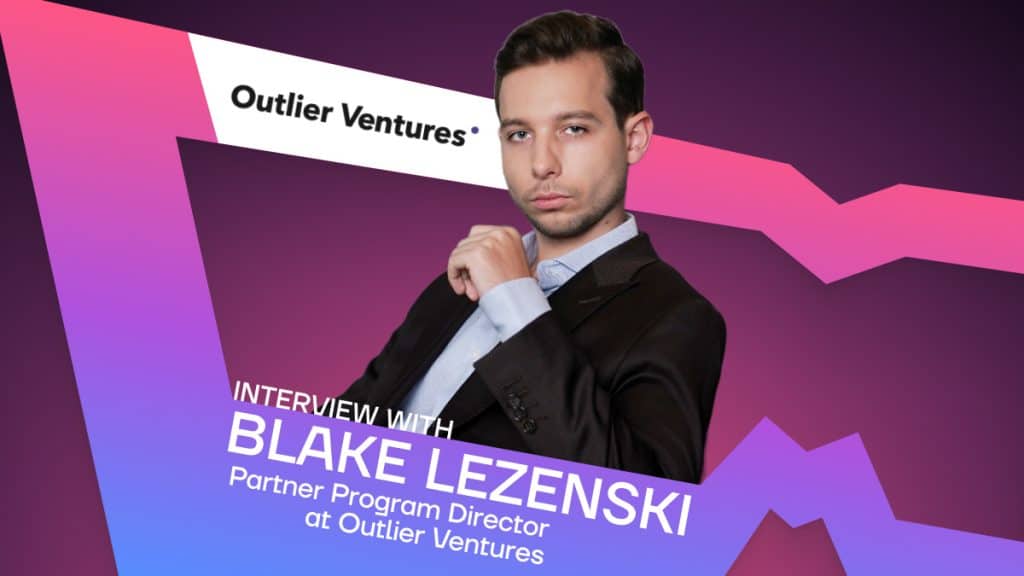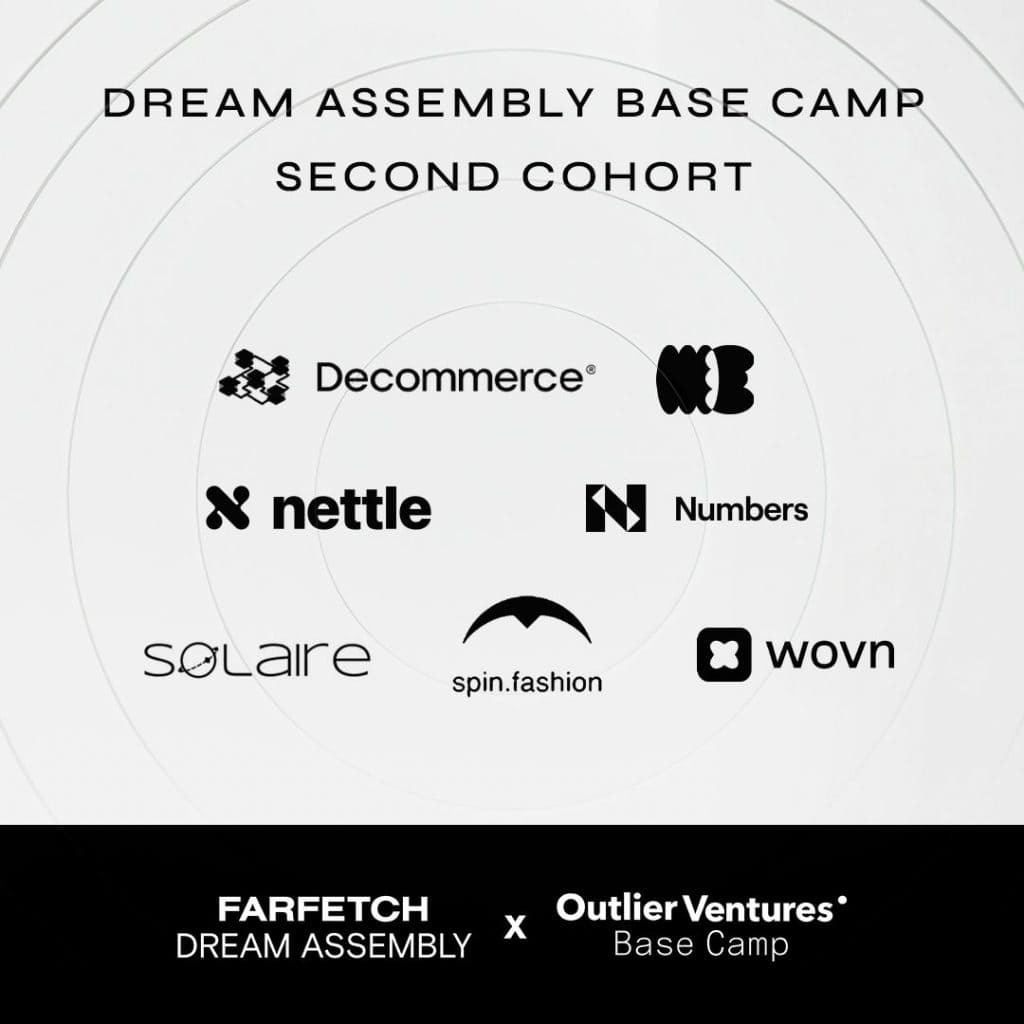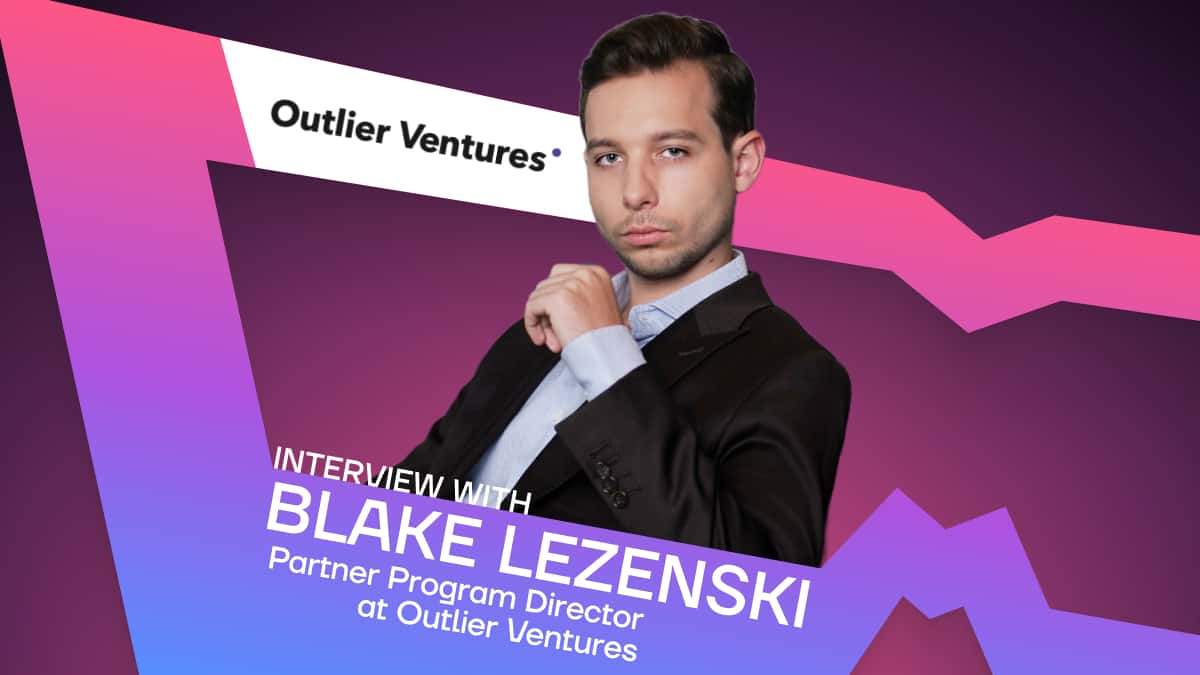[ad_1]
The global luxury fashion platform Farfetch and web3 investor Outlier Ventures have recently launched the second edition of the fashion-focused accelerator program, Dream Assembly Base Camp. Its participants include Decommerce, Me Protocol, Nettle, Solaire, SPIN by Lablaco, Wovn, and Numbers Protocol.

Metaverse Post talked to Blake Lezenski, the Partner Program Director at Outlier Ventures and the Program Manager of Farfetch’s accelerator program to find out about the applications of web3 in fashion and more.
Blake has discussed the future of digital fashion, web3 influencers, and virtual fashion shows. In addition, he shared which skills a fashion-tech entrepreneur should possess in order to succeed in this industry. Lezenski has also told Metaverse Post the story behind his journey in web3 and shared Outlier Venture’s plans and upcoming projects.
What is your background? How did you step into the web3 space in the first place?
I began my professional journey as a corporate VC investor in the energy space, forging strategic partnerships between clean-tech startups and enterprise energy firms across multiple countries.
Driven by a keen interest in angel investing and in the potential of blockchain technology, in 2017, I founded Beyond Capital, a consultancy firm that specialized in providing advice to companies and founders on how to harness the power of blockchain technology.
What is the story behind Outlier Ventures?
I encountered Outlier Ventures through investing in one of its portfolio companies. I now serve as Outlier Ventures’ Partner Program Director, leading in the execution of the Farfetch Dream Assembly Base Camp program on the Outlier Ventures side. With a keen interest in the global digital fashion network, I also serve as a member of the Metaverse Fashion Council advisory board.
Now the world’s leading web3 accelerator, Outlier Ventures has been investing in web3 and Metaverse projects since 2014, with an overarching mission of driving the future of Web3 and the Open Metaverse. Through strategic investment, Outlier Ventures has established a portfolio of 250 web3 startups, facilitating over $350 million in seed funding across its portfolio companies, and offering accelerator programs with a host of marquee partners including Aptos, NEAR Foundation, Farfetch, and Polygon.
How did you come up with the idea of launching the Dream Assembly Base Camp in partnership with Farfetch?
When launching the Dream Assembly Base Camp, our goal has always been to nurture the new wave of startups entering this nascent industry by creating a secure ecosystem tailored to web3 luxury fashion.
As the leading global platform for the luxury fashion industry, partnering with Farfetch felt like a no-brainer. Our longstanding alliance with Farfetch has and will continue to provide us with the opportunity to equip founders with an extensive fashion network, guidance from mentors deeply entrenched in the luxury fashion realm, and invaluable insights into the entire fashion supply chain. By combining Farfetch’s wealth of knowledge and experience in the luxury industry with Outlier Ventures’ expertise in accelerating best-in-class web3 startups, we are able to offer founders and teams a unique blend of support, empowering founders not only to survive but to thrive in this industry.
Why do you think VCs and developers are interested in creating and supporting fashion-related web3 experiences?
Fashion-related web3 experiences represent an exciting promised land for investment and development. For VCs and developers, innovative use cases for web3 across digital fashion utilities, immersive experiences, community curation, and the creator economy represent a massive global market with vast growth opportunities.
Thanks to NFTs, the web3 space, once dominated by software engineers, is now filled with artists and designers creating unique fashion assets such as collectibles and virtual wearables. This concept of digital ownership offers new revenue streams for VCs, enhances brand collaboration, and creates opportunities for digital fashion, ultimately forging richer experiences for consumers craving personalized experiences.
How do you choose startups to join the Dream Assembly Base Camp?
Selected from over 260 applications from around the world, the chosen seven companies exemplify the most exciting web3 startups operating within the luxury fashion and lifestyle sectors. In the case of our second cohort, the program specifically focuses on luxury data infrastructure, community tools, digital fashion infrastructure, and self-representation, with the cohort comprising world-class innovators shaping digital identity with high-fidelity assets and experiences, avatar utility, interoperability, and generative AI. We also wanted round two to focus on sustainability, so selecting a community of creators that foster bold changes in thinking, acting, and choosing positively was a high priority in the selection process.

What do you think are the skills a digital fashion entrepreneur should have to succeed?
Besides a keen interest and an understanding of fashion and technology, founders need to bring the right mindset, consisting of a powerful combination of adaptability and drive. The digital fashion industry is constantly evolving, and entrepreneurs need to be agile in their approach and be able to continually pivot and readjust strategies.
Startup life, particularly within the web3 industry, brings a sea of technical, regulatory, and business-model risks for new founders, and building a successful digital fashion venture requires unprecedented resilience. Entrepreneurs that prepare for potential setbacks and put in the necessary time and effort to overcome obstacles are best suited to achieve long-term success.
In your opinion, will traditional fashion consumers embrace web3?
Web3 fashion offers the perfect platform to deconstruct the misperception that web3 initiatives are only aimed at the crypto community. The underlying technologies behind web3, such as NFTs, hold the potential to democratize fashion ownership. NFTs can fractionalize ownership and enable more affordable access to unique and limited-edition fashion items and token-gated experiences. This opens doors for a broader range of consumers to participate in the world of high fashion, fostering inclusivity and accessibility.
The continued entry of household names and mainstream brands such as Louis Vuitton, Adidas, and Nike into the web3 space further indicates a growing awareness that digital fashion is reshaping the way that consumers interact with fashion on a fundamental level. Web3 initiatives are creating a new dimension of engagement that fashion consumers are keen to embrace, from offering new ways to experiment with styles and virtual try-ons to expressing one’s individuality in ways not possible before. It would seem only a matter of time before traditional fashion consumers embrace web3 with open arms.
Do you think that fashion brands and designers are happy with the ongoing development of web3? Why or why not?
Fashion brands’ perseverance in utilizing digital fashion to unlock new brand experiences indicates strong support for the ongoing development of web3. By embracing web3, fashion brands and designers can future-proof their businesses by extending their brand IP into new communication channels and models of engagement. Web3 has already proven its ability to foster collaborative and co-creative experiences by allowing consumers to actively participate in the design process and share in a brand’s success. This shift from passive consumers to active contributors will be integral in building stronger connections and brand loyalty.
The recent fashion weeks have shown us that web3 and tech talent is becoming more welcome at shows and events. Do you think that crypto influencers will become the new fashion influencers?
It’s true that, in recent years, brands from Gucci to Hilfiger have been seen to invite an increasing number of leaders in the web3 community to attend their runway shows, indicating an ever-growing space for the inclusion of web3 initiatives within conversations surrounding the broader fashion landscape. This willingness to embrace and recognize the influence of web3’s key voices will be integral in opening doors for both parties, as brands look to tap into new communities, invigorate their audiences, and appeal to younger demographics.
While crypto influencers will by no means replace traditional fashion influencers, web3 influencers possess a deep understanding of blockchain and the metaverse, and their ability to bridge the gap between the crypto community and fashion enthusiasts will unlock new perspectives and immersive experiences for luxury brands, meaning that they will continue to play an influential role in bringing digital fashion to the masses.
From your point of view, when will we see high-quality, realistic virtual fashion shows? Is there a platform that would make such experiences technically possible?
Though it’s difficult to pinpoint an exact timeline, significant progress is being made to create immersive virtual experiences that replicate the atmosphere of traditional shows, and many startups of our cohort are exploring how to create brand-immersive, 3D digital experiences.
From Giorgio Armani’s digital collection at Milan Fashion Week last year to the recent launch of Louis Vuitton’s VIA Treasure Trunk, the fashion world is increasingly focused on creating a combined digital and physical experience for its customers. As fashion continues to find its virtual footing, the obvious answer to a platform that will make these experiences possible will be the metaverse, which offers an unparalleled space for immersive, expansive experiences for attendees to interact with digital content in real-time. As we saw with Apple’s announcement, technology like the Vision headset adds significant utility to rapidly growing digital fashion, enabling people to use and show their digital wearables in a more social setting.
Is there any other sphere in web3 and crypto that we should pay attention to?
Outlier Ventures’ huge volume of accelerator applications and investments gives us a unique perspective on the market and emergent trends, so we are constantly on the lookout for areas with transformative potential for the future. As outlined in our most recent thesis, ‘The Open Metaverse Under Attack; The Fight Back’, we’re hugely excited by the considerable innovations that continue to develop and support a more open and inclusive version of web3. One area we have been focused on for some time is the convergence of web3 and AI.
What are Outlier Ventures’ plans?
Beyond web3 luxury fashion, through our core business model of Base Camp accelerator programs, we provide continued support to our cohorts with a host of marquee partners, including Aptos, NEAR Foundation, and Polygon. We recently announced a program with Store Nº8, Walmart’s incubation arm called “The Store Nº8 eCommerce Base Camp” accelerator. It will support startups building solutions to innovate the future of retail through web3.
Read more:
[ad_2]
Read More: mpost.io









 Bitcoin
Bitcoin  Ethereum
Ethereum  Tether
Tether  XRP
XRP  Solana
Solana  USDC
USDC  TRON
TRON  Dogecoin
Dogecoin  Lido Staked Ether
Lido Staked Ether  Cardano
Cardano  Wrapped Bitcoin
Wrapped Bitcoin  Hyperliquid
Hyperliquid  Wrapped stETH
Wrapped stETH  Bitcoin Cash
Bitcoin Cash  Sui
Sui  Chainlink
Chainlink  LEO Token
LEO Token  Stellar
Stellar  Avalanche
Avalanche  USDS
USDS  Toncoin
Toncoin  WhiteBIT Coin
WhiteBIT Coin  Shiba Inu
Shiba Inu  WETH
WETH  Litecoin
Litecoin  Hedera
Hedera  Wrapped eETH
Wrapped eETH  Binance Bridged USDT (BNB Smart Chain)
Binance Bridged USDT (BNB Smart Chain)  Monero
Monero  Ethena USDe
Ethena USDe  Bitget Token
Bitget Token  Polkadot
Polkadot  Coinbase Wrapped BTC
Coinbase Wrapped BTC  Pi Network
Pi Network  Uniswap
Uniswap  Pepe
Pepe  Aave
Aave  Dai
Dai  Ethena Staked USDe
Ethena Staked USDe  Aptos
Aptos  OKB
OKB  BlackRock USD Institutional Digital Liquidity Fund
BlackRock USD Institutional Digital Liquidity Fund  Bittensor
Bittensor  NEAR Protocol
NEAR Protocol  Jito Staked SOL
Jito Staked SOL  Internet Computer
Internet Computer  Cronos
Cronos  Ethereum Classic
Ethereum Classic  sUSDS
sUSDS